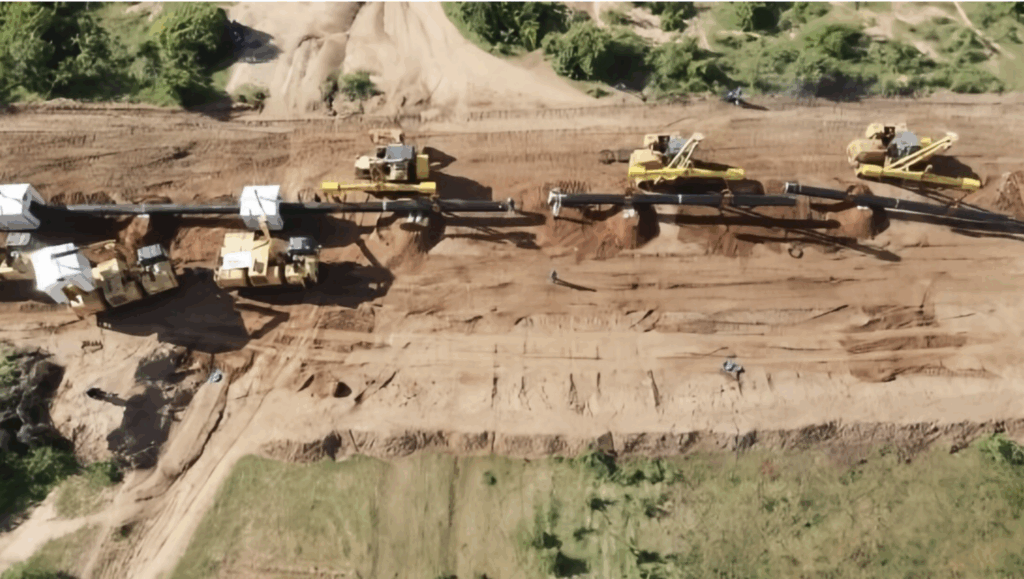https://www.recordchina.co.jp/pics.php?id=951680
http://j.people.com.cn/n3/2025/0415/c95952-20302232.html
According to an interview with an engineering company, the “4-all” refers to four features:
- all diameter steel pipes from 33 mm to 1422 mm in diameter,
- all terrains such as mountains, swamps, and deserts,
- all welding joints such as straight pipes, straight pipes and curved pipes, and curved pipes,
- fully automatic welding ultrasonic inspection.
Four robots are mainly used to perform automated work, forming a welding team that fills this technical gap in the industry. In the construction of the East Africa crude oil export pipeline, the robot team achieved a one-shot pass rate of over 98%. In addition, the amount of welding material used per welded joint was reduced from 2.9 kg to 1 kg, fuel consumption was reduced from 30 liters to 10 liters, and carbon dioxide and smoke dust emissions were reduced by more than 60%.
Previously, welding work on oil and gas pipelines was mainly done by manual welding or semi-automatic welding, accounting for 80% of the time. This method had issues such as high labor intensity, high construction costs, and unstable welding quality.
The “4 All” pipeline welding inspection robot is currently being used in major projects within China, such as the Sino-Russian East Route, the Third Route of the West-East Gas Transport (transporting natural gas from the western region to the eastern region), and the Second Route of the Sichuan East Gas Transport (transporting natural gas from Sichuan Province to the eastern region).It has also been certified internationally by France’s Total and Saudi Aramco, and has been introduced in the East African crude oil pipeline and Saudi Aramco pipeline projects.


